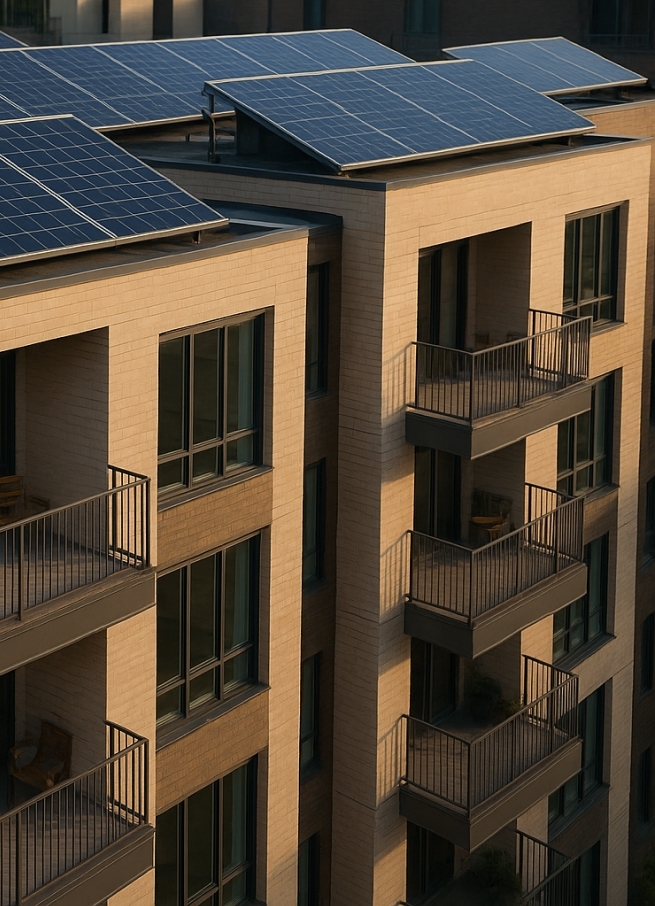Title 24 Compliance and Why its Important for You
.png)
A simple guide on title 24 mandates in California and how it affects multi-family housing
California has committed to run off of 100% renewable energy by 2045. Policies to reach this goal are already in place. These policies and codes will bring about a change in the way of working and living for residents in the state in many ways. Title 24 is an effort in this direction to make California achieve its renewable energy plans.
What is Title 24?
Title 24 is the body of Building Energy Efficiency Standards directed to take care of energy efficiency in all buildings, irrespective of whether they are old or new. These standards are updated every three years by the California Energy Commission in collaboration with stakeholders through a public and transparent process.
Title 24 brings those who own, manage, and live in the buildings together to create more energy efficiency. There are different mandates for commercial and residential buildings with the latter warranting attention to how some building functions like lighting and ventilation are designed and operated.
Title 24 is updated every three years to keep time with rapidly evolving developments in efficiency technology, with the most recent changes going into effect in January 2020.
What changes does the recent Title 24 update mean for residential buildings?
The state continues to increase strict mandates about energy efficiency as characterized in the new 2019 Title 24 code. Before this recent code change, multi-family building owners have had little to no incentive to adopt on-site renewable energy as there has been no efficient and fair way to monetize their investment through their tenant’s consumption.
With the recent code change, Title 24 is now requiring These solar requirements will only continue to get stricter as we approach the 2045 California state goal.
Most developers and apartment owners view this as a problem, but some are seeing the opportunity to add a new revenue stream to their properties by producing energy through shared solar assets and selling that energy to their residents.
Requirements for Multi-Family Housing Structures
Here are some of the changes that will be required as per the latest updates that came into effect in January 2020:
- In 2019, the regulations for single-family and multi-family structures were segregated. Although the regulations for both categories seem similar now, multi-family buildings will eventually find unique set of regulations and will be created as a new category.
- Solar zones whose area is not less than 15% of the total roof area of a building(without the skylight area) to be installed. These solar zones can be located either on the roof, overhang of the building, or overhang of any other structure that is within a distance of 250 feet. This applies to low-rise multifamily buildings and is inclusive of structures with mixed occupancy.(Read about the exceptions here)
- Low-rise multifamily buildings that have interior common areas within a single structure is up to 20 percent of the floor area to be controlled by occupant sensor.
- The lighting requirements as per the latest update calls for permanent labels displaying maximum rate wattage, independent manual control(separate controls for each room), provisions for multi-level lighting control, improved shutoff controls(includes occupant sensors, automatic time switches, and other similar controls), and daylighting controls among the others.
- Multi-family buildings to provide on-site renewable energy. This new requirement can require a developer to offset roughly 50-60% of the about and tenant’s total energy consumption.
Most developers and apartment owners view the responsibility for creating provisions for on-site renewable energy as a problem, but some are seeing the opportunity to add a new revenue stream to their properties by producing energy through shared solar assets and selling that energy to their residents. Some of the upgrades called for by the latest updates can be a game-changer in the long run when it comes to creating improved building functionality.
Title 24, Section 6 Explained
Section 6 of Title 24 is the very first solar mandate in the US. This mandate calls for solar energy provisions for all newly built residential structures. These include installing solar panels for electricity and water heating needs for creating more energy efficiency and savings on utility. The mandate is an encouraging factor for the rise of practices of share solar distribution systems in multi-family dwellings.
Understanding and achieving compliance with section 6 of Title 24 requires a depth of knowledge that comes with years of experience. This article only touches on a couple of key changes that came down the pike in January, More information is readily available from the California Public Utilities Commission.
If you are the owner of a multi-family housing facility, Ivy can help you meet these compliances in a hassle-free and beneficial manner. It provides turnkey solutions for ensuring that property owners can get the most out of their solar assets. Ivy helps residents or tenants of multi-family structures get easy access to solar energy. Moreover, the solutions provided by Ivy make it easier for its users to understand their energy consumption and expenses through an easy and transparent process. Ivy brings the best of technology in the area of solar energy and related solutions to the table to make it easier for all to comply with Title 24.
.png)




